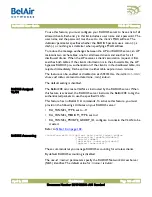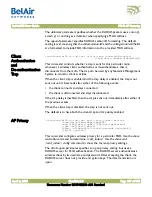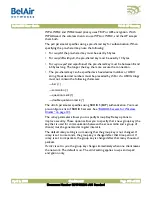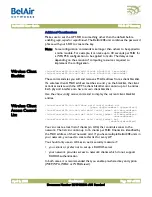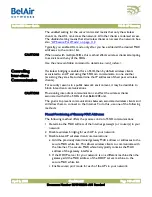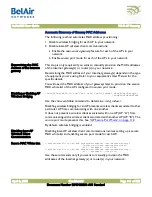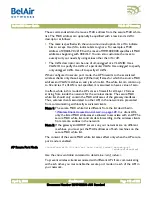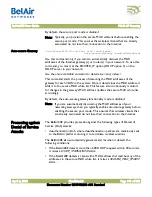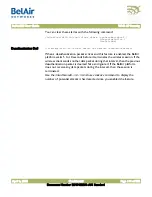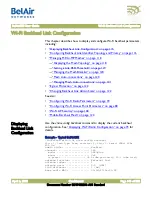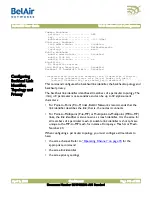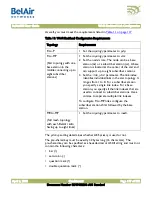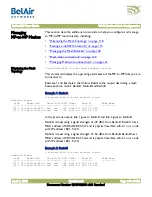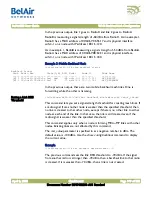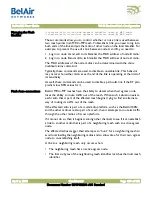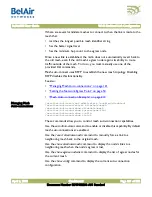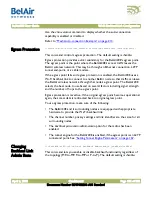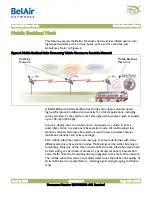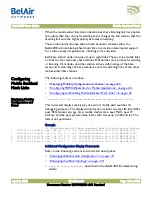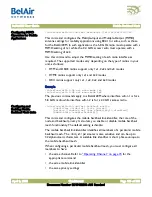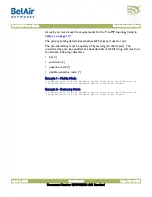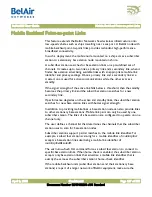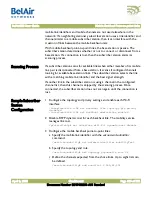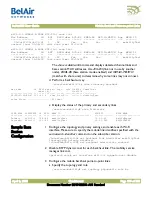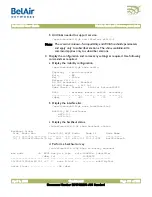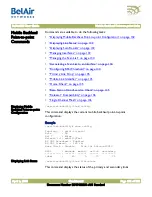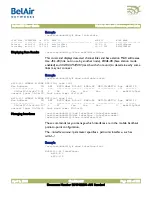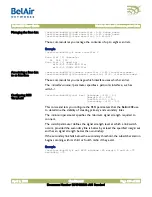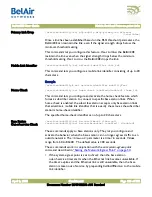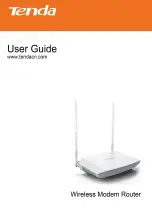
BelAir20E User Guide
Wi-Fi Backhaul Link Configuration
April 2, 2012
Confidential
Document Number BDTM02201-A01 Standard
Managing the Mesh
Blacklist
/interface/wifi-<n>-<m>/add backhaul blacklist <mesh_pt_MAC_addr>
/interface/wifi-<n>-<m>/del backhaul blacklist <mesh_pt_MAC_addr>
These commands allow you to control whether or not a link is used between
two mesh points in an MP-to-MP mesh. To blacklist a link, you need to log in to
both ends of the link and put the radio of other node on the local blacklist. For
example, to prevent the use of a link between node A and B, you need to:
1 Log in to node A and add to its blacklist the MAC address of node B radio.
2 Log in to node B and add to its blacklist the MAC address of node A radio.
The MAC addresses of the node radios can be determined with the
show
backhaul status
command.
Typically, these commands are used to disable an unstable link. This behavior
may occur when either radio at each end of the link is operating at the limit of
its sensitivity.
As well, these commands can be used to disable a particular link if the RF plan
predicts low RSSI values for it.
Mesh Auto-connections
BelAir MP-to-MP meshes have the ability to detect when their egress node
loses the ability to route traffic out of the mesh. When such a situation exists,
each radio that is part of the affected mesh begins trying to find an alternate
way of routing its traffic out of the mesh.
If the affected radio is part of a multi-radio platform, such as the BelAir100N,
and the other radios are also part of a mesh, then it attempts to route its traffic
through the other radios of its own platform.
If it cannot do so, then it begins scanning other channels to see if it can establish
a link to another radio that is part of a neighboring mesh with an active egress
node.
The affected radios stagger their attempts to “hunt” for a neighboring mesh to
avoid overloading the neighboring radios and to allow time for their own egress
node to re-establishing itself.
A link to a neighboring mesh only occurs when:
• The neighboring mesh has an active egress node.
• The first six bytes of the neighboring mesh identifier matches the local mesh
identifier.

